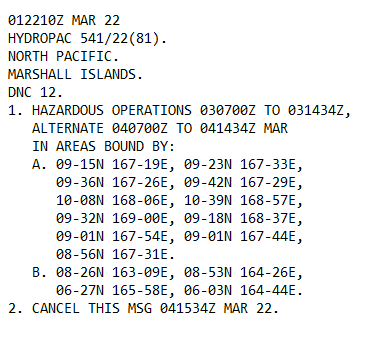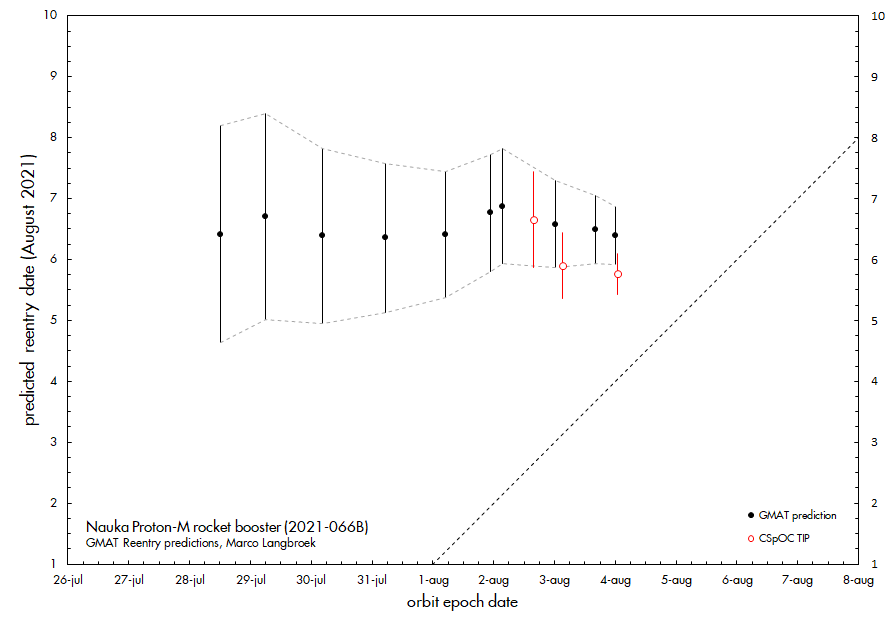
Rumour has it that thisd might be another inspector satellite.
The orbital plane of USA 326 passes over Plesetsk at 20:25 UT
The orbital plane of USA 326 passes over Plesetsk at 20:25 UT
https://twitter.com/OrbitalFocus/status/1554062517365784578
USA 326 (2022-009A) was launched on February 2 this year and is believed to be a new generation of electro-optical reconnaissance satellite:
sattrackcam.blogspot.com/2022/02/the-up…
It is in a 97.4 deg inclined, 518 x 488 km orbit.
sattrackcam.blogspot.com/2022/02/the-up…
It is in a 97.4 deg inclined, 518 x 488 km orbit.
The Russian launch today was indeed at 20:25 UTC, right at the moment the USA 326 orbital plane passed over Plesetsk (i.e. the launch was into the orbital plane of USA 326):
interfax.ru/russia/854824
interfax.ru/russia/854824
It appears that the object has been catalogued under number 53324 in a 97.25 degree inclined 284 x 425 km orbit, in the same orbital plane as USA 326 but a somewhat lower initial orbital altitude.
Will be interesting to see what it will do the coming weeks & what USA 326 will do
Will be interesting to see what it will do the coming weeks & what USA 326 will do

The orbit is still preliminary but compared to USA 326, RAAN differs by only 0.08 deg, inclination by 0.14 deg, apogee by ~92 km, perigee by ~205 km, Mean Motion by about 0.5 revolution/day.
If the suspicions hold, I expect it to manoeuvre to raise perigee and apogee
If the suspicions hold, I expect it to manoeuvre to raise perigee and apogee
It turns out that the first object catalogued, 53324, is actually the rocket booster.
Payload now also catalogued as object 53323 in a 97.25 degree inclined, 435 x 452 km orbit even closer to the USA 326 orbit (differences: RAAN 0.04 deg, perigee 53 km, apogee 65 km)
Payload now also catalogued as object 53323 in a 97.25 degree inclined, 435 x 452 km orbit even closer to the USA 326 orbit (differences: RAAN 0.04 deg, perigee 53 km, apogee 65 km)

• • •
Missing some Tweet in this thread? You can try to
force a refresh
























